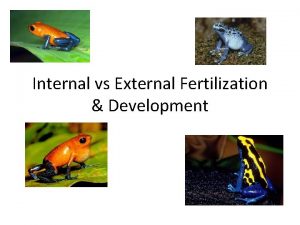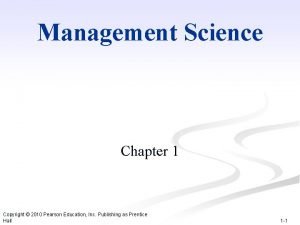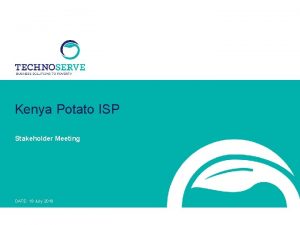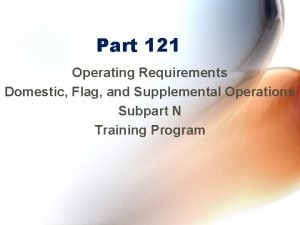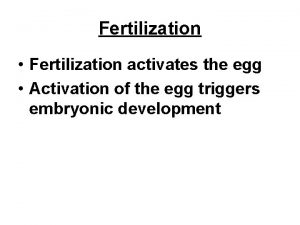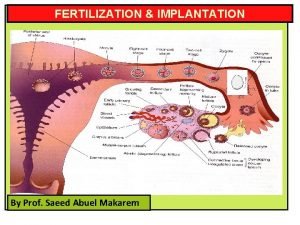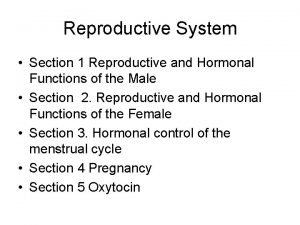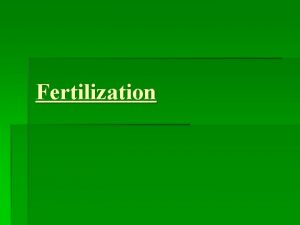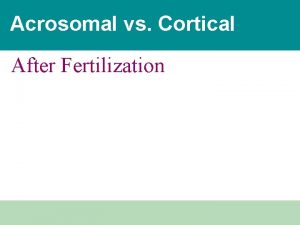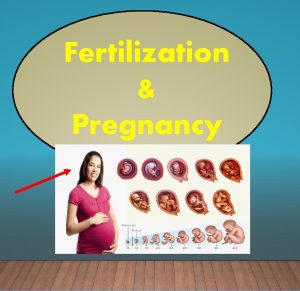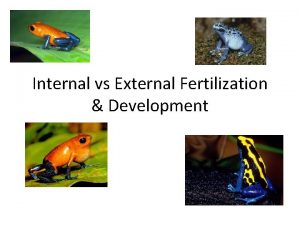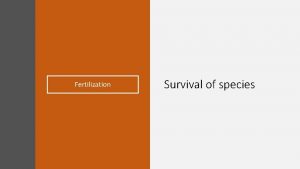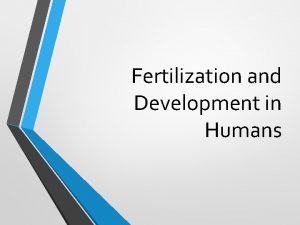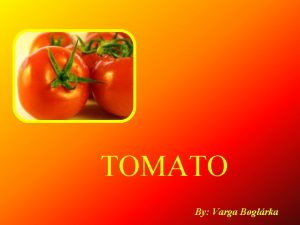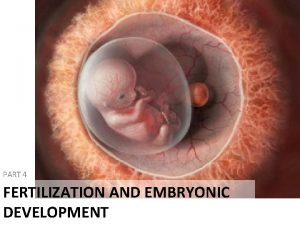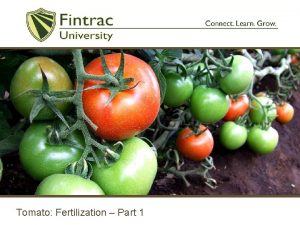Tomato Fertilization Part 2 Tomato Fertilizer Requirements A











- Slides: 11

Tomato: Fertilization – Part 2

Tomato Fertilizer Requirements A crop’s fertilizer requirement will depend on target yields and crop management (in addition to soil type and existing quantities of nutrients in the soil). Below are some examples of fertilizer recommendations. Soil type: Sandy loam Expected yield: 150 T/Ha. Expected yield: 100 T/Ha. Kg/Ha N P 2 O 5 K 2 O 470 Ca 125 Mg 119 B 4. 1 213 775 N P 2 O 5 K 2 O 250 -250 N 100 270 -280 P 2 O 5 (high) P 2 O 5 (low) 225 K 2 O (high) K 2 O (low) 335 500 -700 Example taken from Haifa Fertilizers Example taken from Fintrac Honduras. Soil tests show low quantities of N, P, K. Kg/Ha 110 Fertilizer requirement depends on whether the soil test shows high or low quantities of P or K in the soil already. Example taken 110 from S. E. Vegetable Guide, Photo credit: Scot Nelson USA

Fertilizers Different fertilizers can supply the nutrients required by a plant. The fertilizers break down into the specific chemical forms utilized by the plants. Differences in fertilizers are characterized by: 1. Types of nutrients contained • Complete fertilizers contain N, P and K. Other fertilizers contain only one or two of these elements (e. g. Urea contains 46% N, while Diammonium Phosphate contains 18% N and 46% P 2 O 5). 2. Amount of nutrients • Commercial fertilizers contain higher percentages of nutrients as compared to organic fertilizer sources (e. g. Monoammonium Phosphate [MAP] contains 11% N and 52% P 2 O 5 while Bone Meal contains 3% N and 20% P 2 O 5). 3. Solubility of the fertilizer • Solubility is an important characteristic for fertigation. It is calculated by how much fertilizer can be dissolved into a certain quantity of water. Ammonium Sulfate is very soluble, Potassium Sulfate is not. Photo credit: Scot Nelson

Fertilizers 4. 5. 6. Nutrient release properties • In situations were fertigation is not available and where soils, climatic conditions or irrigation practices lead to leaching, slow-release fertilizers can be beneficial. They are more expensive. Ability to acidify the soil • Nitrogen is the main element that affects soil p. H mainly due to the quantities used. Nitrate-based fertilizers have the lowest ability to acidify while Ammonia-based products have the highest. Ammonium Sulfate is an example of a fertilizer that increases acidity of the soil. Compatibility with other fertilizers • When a combination of fertilizers are used in fertigation, care must be taken to not mix incompatible fertilizers. These will react, precipitate out and could clog the drip system. Calcium nitrate is incompatible with most fertilizers and should be kept in a separate fertilizer tank. Commercial versus Organic Fertilizers: Simply put, organic fertilizers deliver the exact same chemical forms of the nutrients as commercial fertilizers, only in lower quantities. Organic fertilizers do have an additional benefit in their ability to deliver organic matter to improve soil Photo credit: Scot release Nelson conditioning and function. They also contain many micronutrients and allow for slow of the nutrients. On the downside, they are difficult to handle, are needed in large quantities (& therefore are more expensive) and complicated to manage in a nutrition program.

Timing of Applications This will depend on a farmer’s irrigation system and the fertilizers available. Drip irrigation is a very effective method of supplying nutrients: 1. 2. 3. The nutrients are delivered in liquid form – which is how plants feed; the quantities delivered are just what the plant needs at that time so that there is little wastage; The nutrients are delivered straight to the root zone from the emitters. This form of fertilizing the crop is known as ‘fertigation’. If this is not available, then more traditional fertilizer programs with basal applications of solid formulations followed by in-crop applications are required. Commonly, there is a pre-plant application of some of the nitrogen and potassium fertilizer and all of the phosphorus and micronutrients. The remaining nitrogen and potassium is applied during the growth of the crop. In-crop applications can be made using soluble fertilizers and modified knapsack sprayers, to Photo credit: Scot Nelson increase uptake and efficiency.

Timing of Applications QUESTION: During a fertigation event, when should the fertilizer be released during the irrigation cycle? ANSWER: During the whole event Below are fertilizer applications done at the beginning (left) and end (right) of the irrigation cycle Drip line WRONG fertilizer water front WRONG Photo credit: Scot Nelson

Timing of Applications If the fertilizer is released during the entire irrigation cycle, then the whole root profile will be left with fertilizer rather than pushed out past the roots or left close to the emitter. Drip line RIGHT

Nutrition Problems in Tomato can suffer from different types of nutritional deficiencies and excesses. Nitrogen deficiency: • Pale green to yellow leaves starting with the older leaves. Plants remain short and thin. More of a problem on sandy soils where leaching is a threat, or in a soil with little organic matter. • Nitrogen excesses lead to excessive, lush foliage and few flowers. Phosphorus deficiency: • Plants are erect and spindly, almost the same height of normal plants but with smaller leaves and the appearance of less foliage. Leaves can turn purple (most common on the underside of leaves). Not easy to diagnose this deficiency because the leaves remain dark green. Common where soils are wet and cold and when the plants have poor root systems. Potassium deficiency: • Poor flowering or fruiting. Leaf symptoms start in mature leaves. First signs are necrosis along the leaf edges, which spreads into the spaces in between the veins. The leaves usually curl a little around the edges. More of a problem on sandy soils or where leaching is a threat.

Nutrition Problems in Tomato Calcium deficiency: • Blossom end rot is an obvious sign of calcium deficiency in the plant. Lack of calcium also causes yellowing & curling on the margins of the young leaves. This deficiency is usually linked to insufficient water or to conditions that lead to poor transpiration in the plant. Magnesium deficiency: • Older leaves show a yellowing of the areas between the veins while the veins remain green. Occurs on older leaves. Can be caused by excess calcium or potassium in the soil. Also caused by heat or water stress. Deficiencies in other key nutrients are not usually seen under normal field conditions. Boron, iron and zinc deficiencies can occur when p. H is outside of the normal range; when competing nutrients are in excess; or when there are periods of water or temperature stress. Lack of boron and iron lead to poor fruit set and development, while lack of iron leads to emerging leaves showing a light green or yellow color. Blossom end rot in tomato

Balancing Vegetative & Generative Growth A tomato plant can become too vegetative or too generative depending on a number of factors. Vegetative growth focuses on the production of shoots and leaves while generative or reproductive growth focuses on the production of fruit. A farmer has to understand the balance between these two growth phases. Initial growth of a tomato crop should be all vegetative, until it is big enough to produce and carry a high yield of fruit. During fruiting, growth should be mainly generative but not exclusively, because a plant still needs to produce leaves for photosynthesis and fruit filling. Thick stems and large, pale green leaves are symptomatic of vegetative growth. Flower drop, poor fruiting and leaves at the end of fruit trusses (see photo) are additional signs that the plant is too vegetative. What can a farmer do to tip a plant from vegetative to generative growth? • Lower the amount of nitrogen in the nutrition program (specifically in relation with potassium) • Increase the stress (e. g. by reducing water availability)

Conclusion Fertilization is a critical component of successful tomato production. Not only are fertilizers the largest input cost, but there are multiple factors that influence whether they end up being used properly or not. If used incorrectly, there is the potential for large wastages and/or poor development of the plant. In these two units, we have covered the different factors that need to be considered when planning for and implementing a successful nutrition program. These are: • • Existing nutrients already in the soil Soil type, soil texture and soil p. H Fertilizer types and individual properties Matching of yield targets and management practices with fertilization levels Application techniques, with a focus on fertigation Timing of fertigation applications Nutrient deficiencies Balance between vegetative and generative growth in tomato This completes Unit 9. 1 and 9. 2. The next unit will look at cultural practices in tomato.
 External fertilization birds
External fertilization birds The willow furniture company produces tables
The willow furniture company produces tables Potato fertilizer requirements
Potato fertilizer requirements Composite flight plan
Composite flight plan Part 121 alternate requirements
Part 121 alternate requirements Basic vfr minimums
Basic vfr minimums Does meiosis occur after fertilization
Does meiosis occur after fertilization True coelom vs pseudocoelom
True coelom vs pseudocoelom Uterus is the part of which system in pila
Uterus is the part of which system in pila Define fertilization
Define fertilization Physiological function of estrogen
Physiological function of estrogen Telolecithal
Telolecithal
